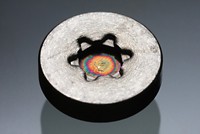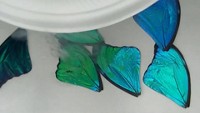Advertisement
Grab your lab coat. Let's get started
Welcome!
Welcome!
Create an account below to get 6 C&EN articles per month, receive newsletters and more - all free.
It seems this is your first time logging in online. Please enter the following information to continue.
As an ACS member you automatically get access to this site. All we need is few more details to create your reading experience.
Not you? Sign in with a different account.
Not you? Sign in with a different account.
ERROR 1
ERROR 1
ERROR 2
ERROR 2
ERROR 2
ERROR 2
ERROR 2
Password and Confirm password must match.
If you have an ACS member number, please enter it here so we can link this account to your membership. (optional)
ERROR 2
ACS values your privacy. By submitting your information, you are gaining access to C&EN and subscribing to our weekly newsletter. We use the information you provide to make your reading experience better, and we will never sell your data to third party members.
Electronic Materials
Chemistry In Pictures
Chemistry in Pictures: An LED’s polar bear plunge
by Manny I. Fox Morone
December 6, 2022
Light-emitting diodes shine in a spectrum of colors thanks to semiconductors inside them: materials that can easily shuffle electrons between two discrete energy levels when they’re connected to a power source. The color of an LED is directly connected to the gap between the semiconductor’s two energy levels. In this demo, YouTuber Tommy Technetium shows how that gap can change when an LED is dipped in –78 °C liquid nitrogen, changing a yellow LED to green. The low temperature increases the gap between semiconductors’ two energy levels. Specifically, it makes the lower energy level even lower and makes LEDs release higher energy photons, which are “bluer” than the room-temperature color.
Credit: Tommy Technetium (videos, Subscribe to his YouTube channel, follow @pchemstud on Twitter and on TikTok)
Do science. Take pictures. Win money. Enter our photo contest here.




Join the conversation
Contact the reporter
Submit a Letter to the Editor for publication
Engage with us on Twitter